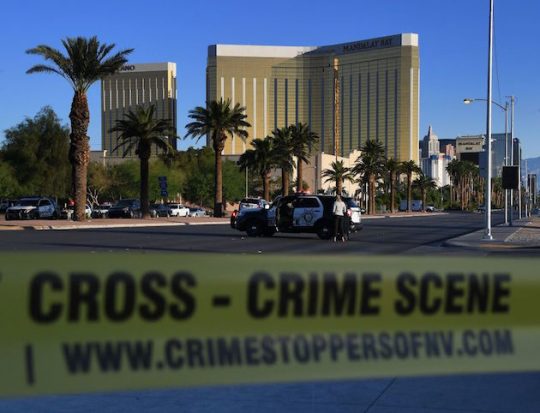In the aftermath of the worst mass shooting in American history, an attack where a madman unleashed a torrent of unimaginable horror on a crowd of innocent people, coverage of the massacre was rightfully wall to wall across the media spectrum. However, while coverage of the heroism of first responders and the tragedy of those stolen from their friends and loved ones has been superb and moving, the coverage of firearms has been far less impressive.
Whether it's so-called experts wildly misrepresenting the function and purpose of certain firearms accessories, reporters wildly misrepresenting recent gun-policy changes, or broadcasters outright advocating for new gun-control measures, it was not a banner day for journalism. Things got to the point where a reporter from an ostensibly objective, major-media outlet publicly advocated journalists move beyond mere "facts," which he scare-quoted for effect, and into open advocacy. "Been a journo for a while now," Cal Perry of NBC News tweeted. "It has become impossible to report just, 'facts' about gun violence. The fact is America needs gun control."
Those examples, as bad as they are, just scratch the surface of incompetence and bias. And, of course, these mistakes and misrepresentations are all too common any time the media focuses on a firearms-related story. There is no way around it: The news industry is incomprehensibly inept at reporting on guns.
One of the main reasons this is the case stems from the fact that no major media outlet currently employs even one reporter dedicated specifically to the gun beat. While the latest polling shows that nearly 120 million Americans have a gun in their home and gun policy is often at the center of our politics, not one major media outlet has dedicated a reporter to exclusively or even primarily cover gun issues. Recently, when I asked the ATF what media outlets report on them on a regular basis, they told me there were only three: the Washington Free Beacon, The Trace, and Guns.com.
It is instructive to note that all three are relatively small operations with a few dozen employees at most. While the reporting from each of those outlets is generally great—especially from the Free Beacon—it should also be noted that Guns.com and the Free Beacon have an openly pro-gun editorial perspective and The Trace was founded in part by the gun-control group Everytown for Gun Safety.
None of the major outlets with hundreds of staff members who present themselves as objective outlets have assigned even one person to this beat. So, when a major gun-related story breaks (and it's a problem in and of itself that shootings are the only gun-related stories major outlets seem to think are major stories), none of their reporters have expertise. They're not informed on the topic beforehand. They don't understand firearms terminology. They don't understand firearms laws and regulations at either the local, state, or federal level.
That leads to hurried stories or segments created by reporters and producers who, at best, half-understand what they've been told by officials. That's the result even when these reporters do their very best to present the most accurate possible information to their audience.
Of course, the lack of expertise and experience isn't the only problem. When it's combined with the personal distaste for guns that's common throughout the industry, the result is bad reporting across the board.
Things are unlikely to improve in the short term. With the revelation that the Las Vegas shooter used a firearm equipped with a bump-fire stock, coverage has already begun to delve into a little-known and extremely confusing realm of firearm function and regulation. You see, bump firing is a shooting technique which enables a shooter to repeatedly engage the trigger of a semi-automatic firearm, utilizing the assistance of the recoiling produced by each gun shot, to fire at a much higher rate than what can be accomplished by squeezing the trigger normally. A bump-fire stock can be used to facilitate this technique. However, what many reporters have missed and many more are likely to miss in the coming days, bump firing can easily be performed on many semi-automatic rifles without any modification or special accessory.
It's not all bad, though. There have been bright spots amidst the generally poor reporting on a dark story. The Wall Street Journal managed to break news on the firearms employed by the madman while accurately and succinctly explaining the laws and regulations surrounding them. The Washington Post did much the same and also published a well-written analysis of part of the political debate already raging around the shooting.
As the story unfolds, there's still little official confirmation on the details of the kinds of firearms the shooter employed. It's likely the bad coverage will continue to overshadow the good. But I'm optimistic the industry can and should do better in the future. I've fielded more questions on firearm function and regulation from other reporters over the last 24 hours than I ever have before. They want to learn the facts so they can better relay them. They are striving to better inform their audience and that's a good thing.
Many more reporters will need to do the same, and the industry will have to take the issue more seriously before real improvement can take place.
